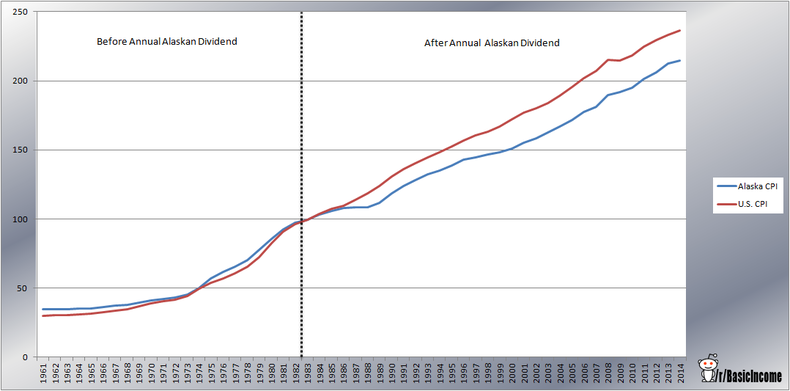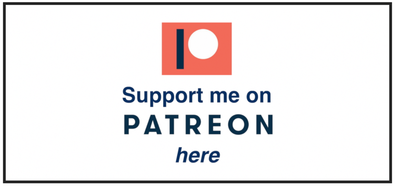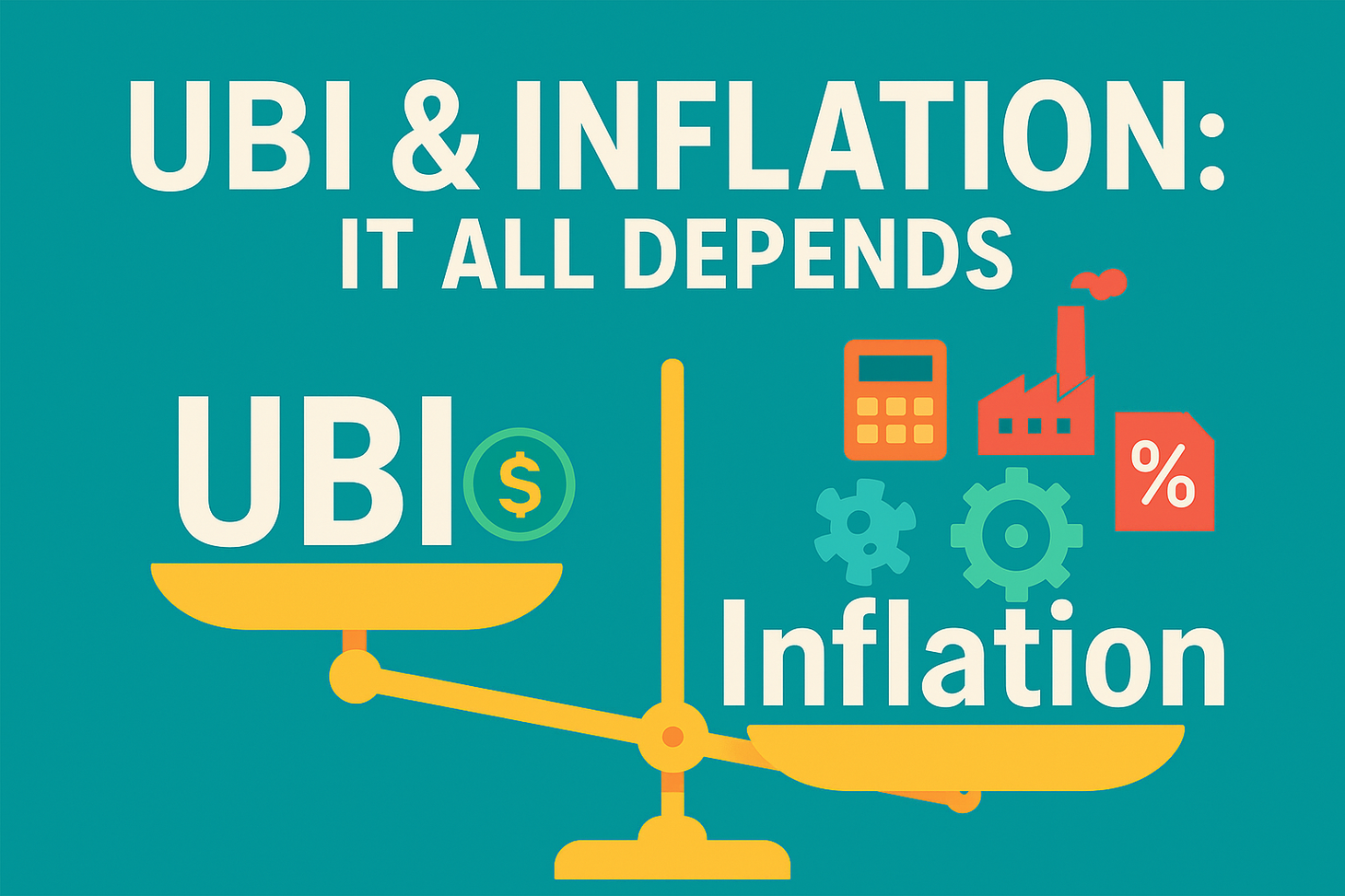Alaska vs. the U.S. Before and After Existence of the Yearly Alaskan Dividend

Every year every qualifying resident of Alaska receives an annual dividend provided by the Alaska Permanent Fund. The most recent payout was $1,884 in 2014, for every man, woman, and child in Alaska. The first payout of $1,000 occurred in 1982.

Data Source: Alaska Department of Labor and Workforce Development
CPI data reveals that prior to 1982, $1 did not go as far in Alaska than it did in the U.S. as a whole. 1982 was the last year this was true. Beginning in 1983, $1 in Alaska began to go farther than it did in the U.S. as a whole, and this trend continues to this day.
Alaska CPI | US CPI1981: 92.4 | 90.9 (last year without dividend) 1982: 97.4 | 96.5 (dividend paid in October) 1983: 99.2 | 99.6 (first full year with dividend)
Is it just pure coincidence that CPI data reveals this flip from worse CPI to better CPI for Alaska relative to the entire United States? It's possible. There could be a variety of confounding variables. What is entirely clear however, is that the dividend did not cause any inflation in Alaska.
A common fear of providing everyone "free money" in the form of a basic income is that the costs of everything will rise, eroding the value of all money as CPI rockets upwards. The partial basic income provided in Alaska in the form of their Permanent Fund Dividend appears to counter this fear with thirty years of a CPI growing at a slower rate than the rest of the country.
It should also be noted that it is in general more expensive to live in Alaska. Due to higher transportation costs, shorter growing seasons, greater heating expenses, etc. the poverty level in Alaska for an individual with no kids is $14,350 whereas in the contiguous U.S. it's $11,670. And yet Alaska has among the lowest poverty rates of any state in the country, coming in No.2 with only New Jersey having a lower percentage of people living in poverty.
Meanwhile, looking instead at the growth of inequality in the U.S. between 1979 and 2012...
More than half of U.S. states—26 plus D.C.—saw inequality increase at a rate higher than the national average over this period. Connecticut led the way with a 26 percent increase, followed by Massachusetts, New Jersey, Ohio, and New York. With the exception of Ohio, these are all larger states with robust knowledge economies. And all but four states— South Dakota, Alaska, Arkansas, and Hawaii—saw inequality rise by ten percent or more. -Source
Between 1979 and 2012, the Gini coefficient in Alaska rose from 0.393 to 0.415. In the country as a whole, it rose from 0.413 to 0.471. Alaska's growth in inequality is thus 38% that of the growth in inequality of the entire U.S. It's barely budged whereas in the rest of the country it's practically exploded.
Is all of this just pure coincidence and due to other factors that the only U.S. state to give a universal amount of cash money to its citizens just happens to have a slower rate of inflation, a lower level of inequality, and a lower amount of poverty than most any other state in the Union?
How about it, states? Want to test this out for yourselves? Who wants to be the first state to adopt the Alaska Model of providing a partial basic income to your residents?
Let me help you out. You can start right here.

Did you enjoy reading this? Please click the subscribe button and also consider making a monthly pledge in support of my daily advocacy of basic income for all.
_large.jpg)
UBI Guide Newsletter
Join the newsletter to receive the latest updates in your inbox.



